Abstract
It has been demonstrated by virologists that, when procedural difficulties can be overcome and host variation can be eliminated, dosage-response data from virus assays conform with the one-particle theory of infection for both plaque counts and tissue cultures. Based on this theory, the number of virus particles from quantal virus assays can be estimated. Here a set of tables is presented from which the number of estimated particles can be obtained directly for several dilution factors and a number of dilution levels. Maximum likelihood estimation of particle counts is also illustrated using a computer program that we have prepared.
Full text
PDF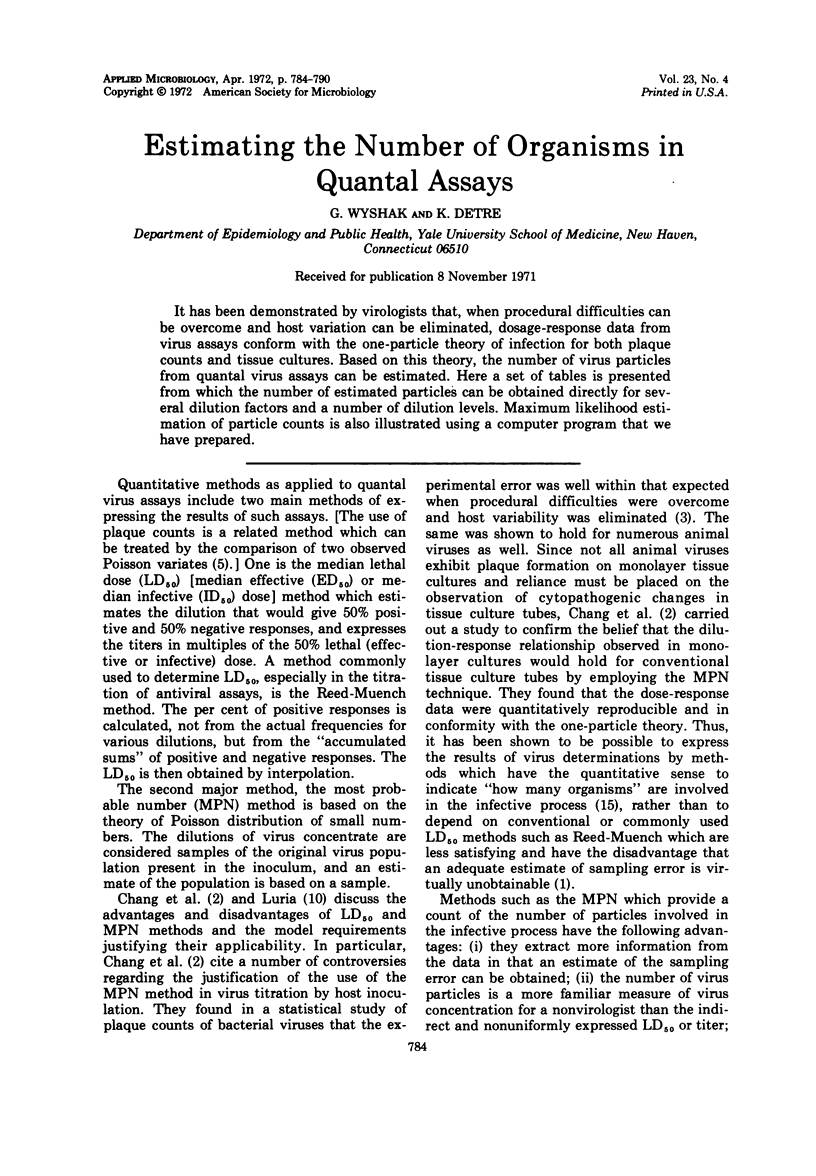
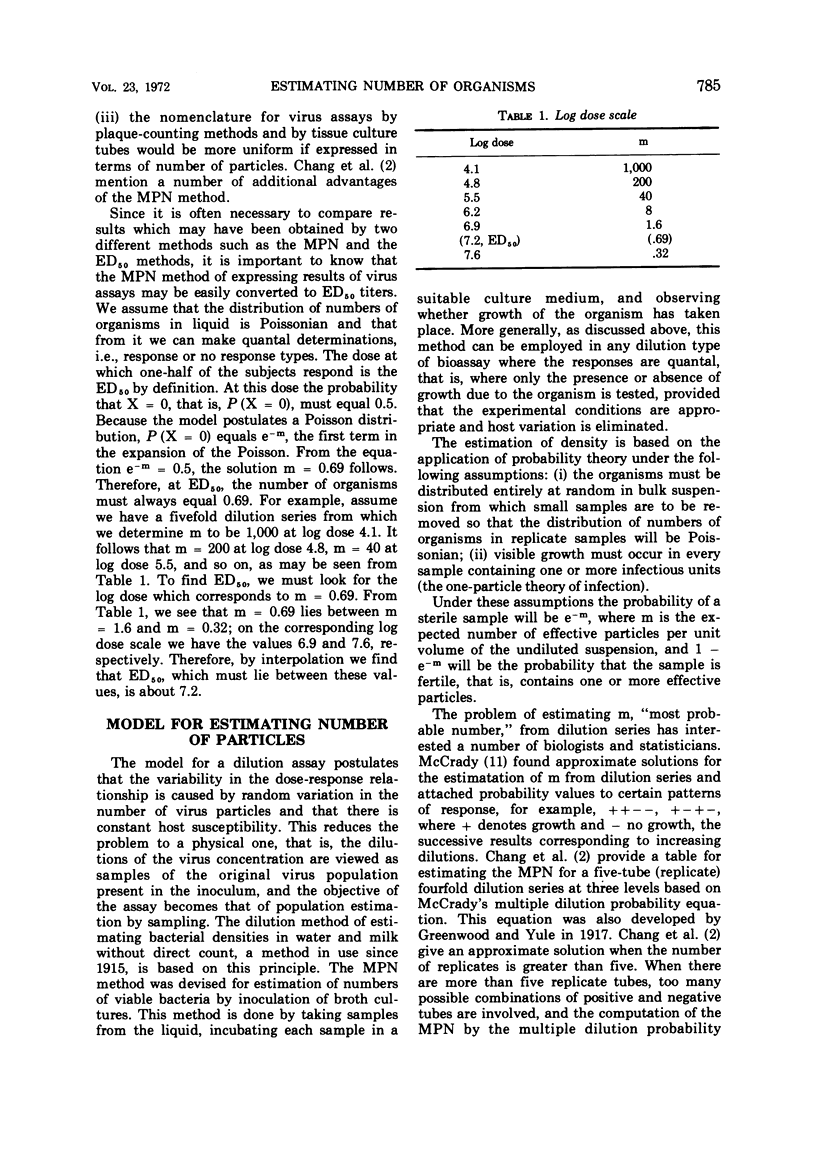
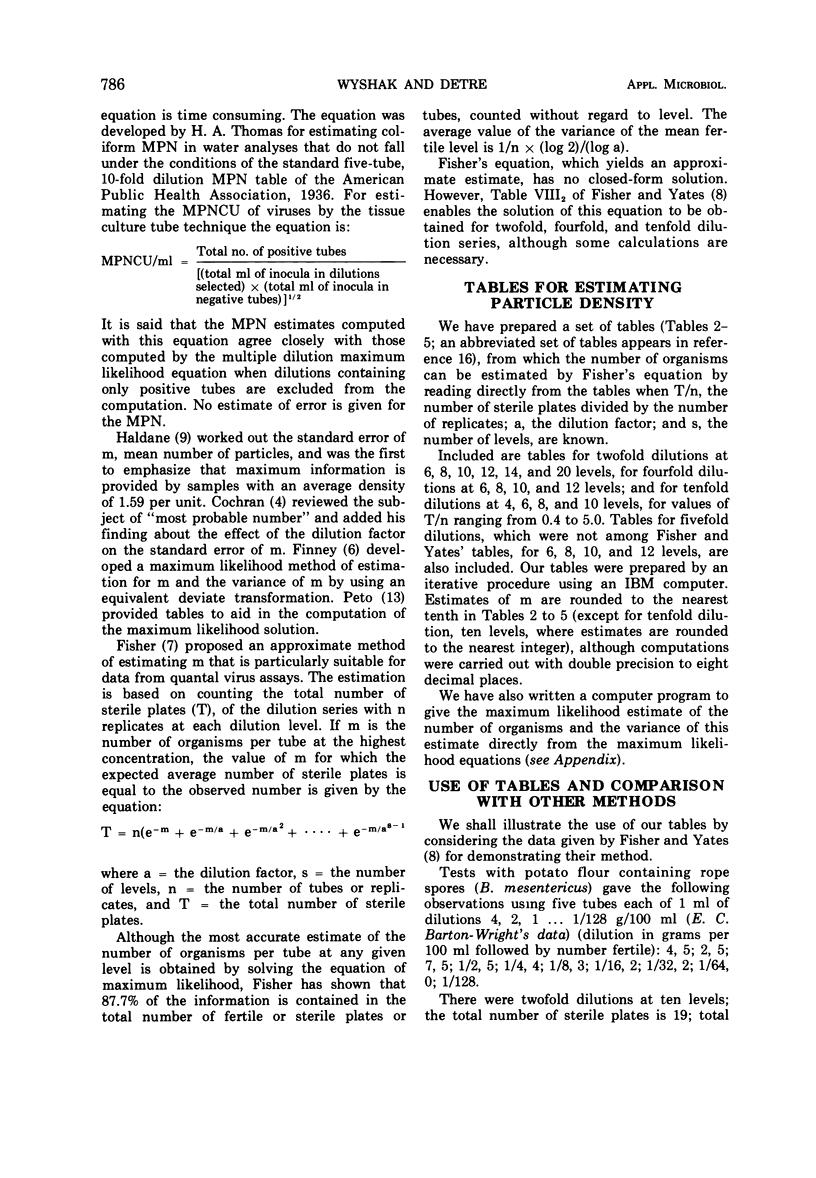
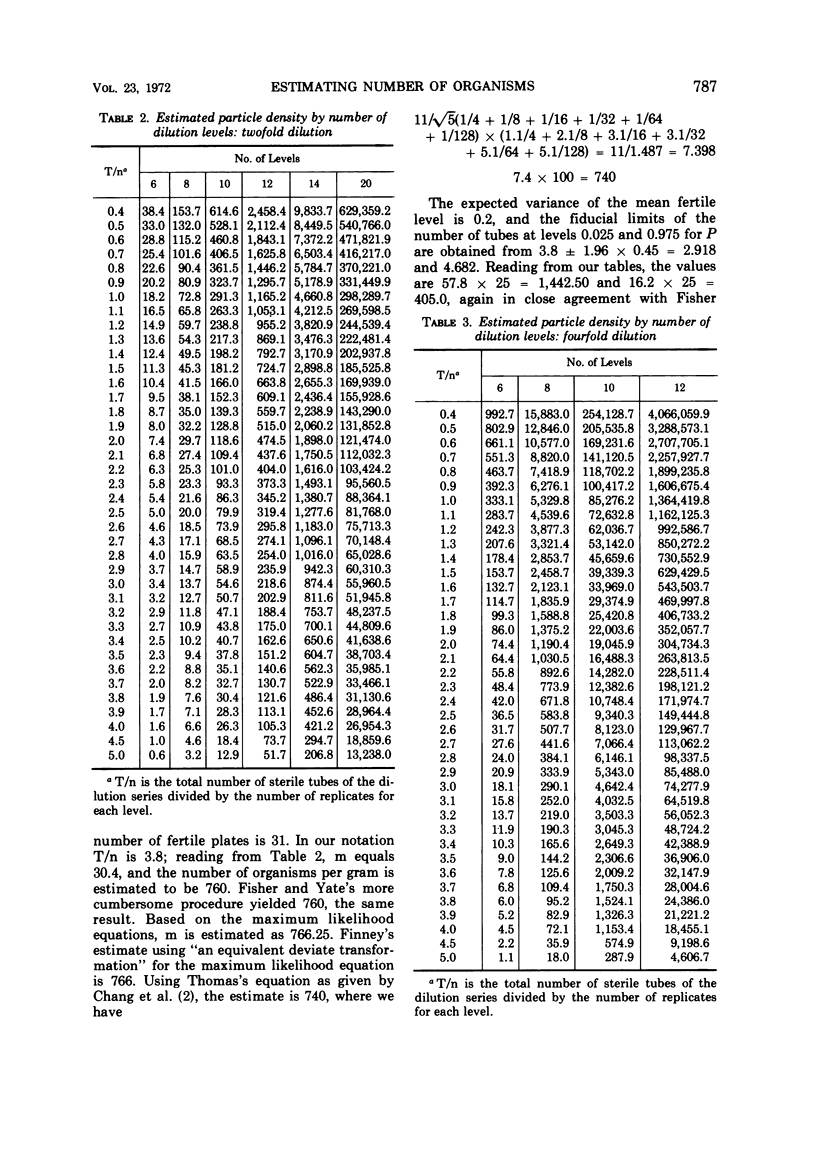
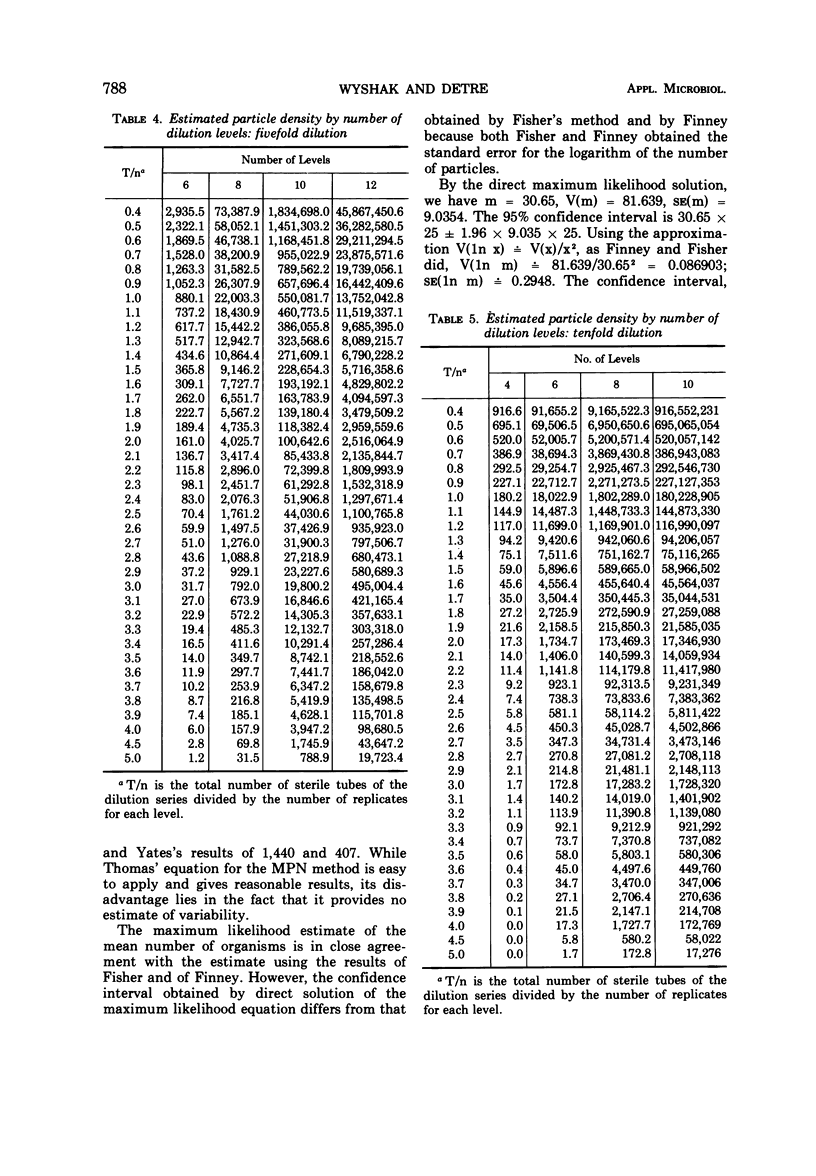
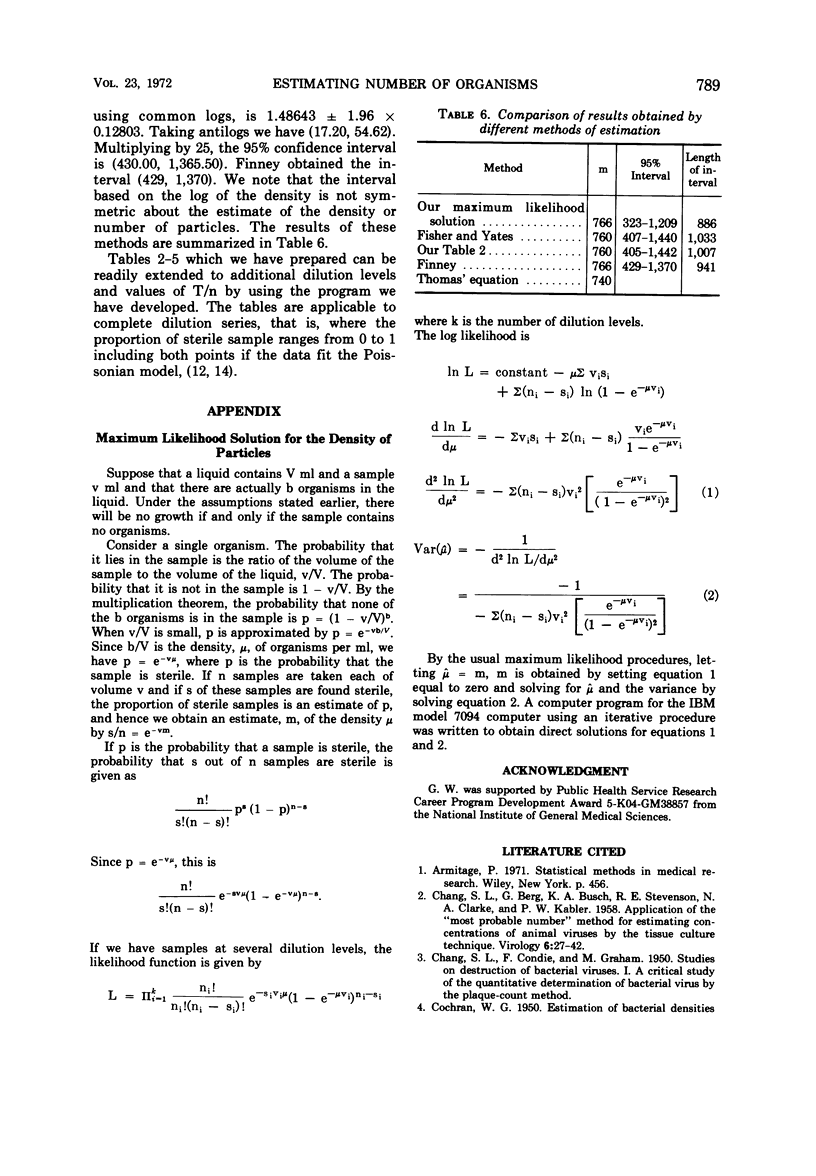
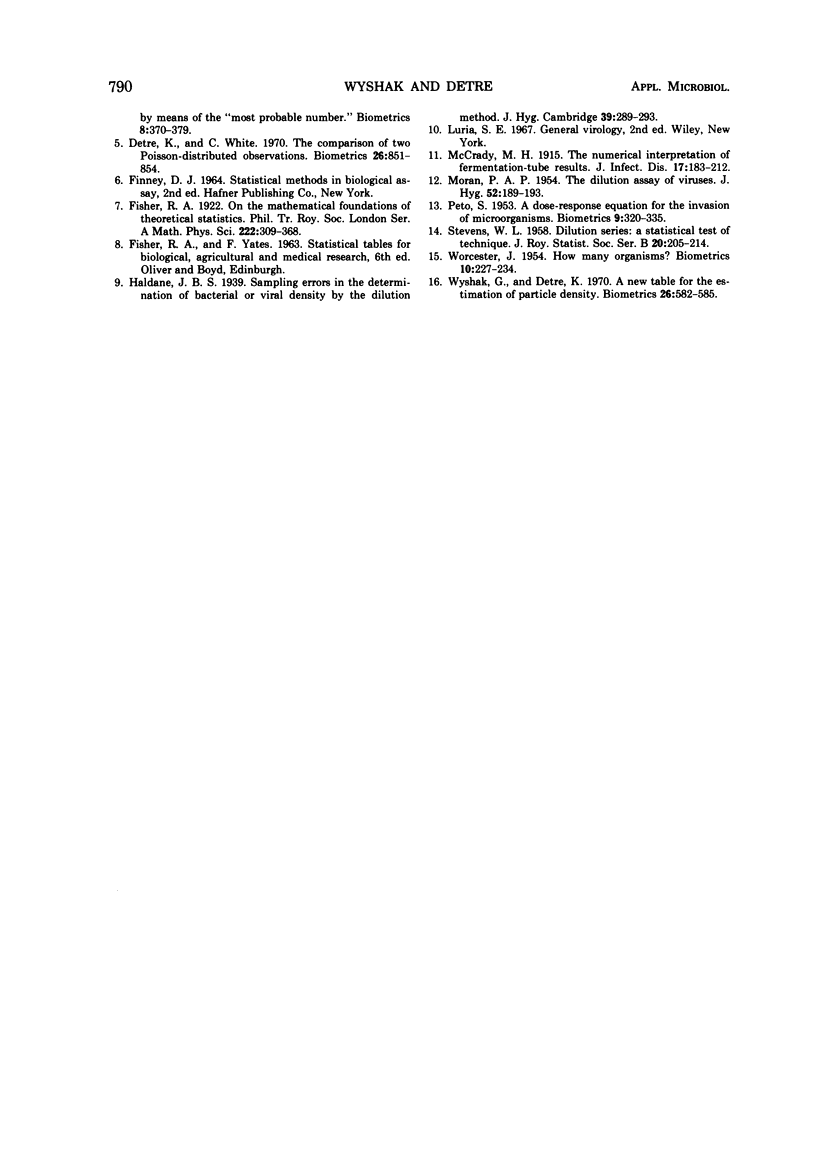
Selected References
These references are in PubMed. This may not be the complete list of references from this article.
- CHANG S. L., BERG G., BUSCH K. A., STEVENSON R. E., CLARKE N. A., KABLER P. W. Application of the most probable number method for estimating concentrations of animal viruses by the tissue culture technique. Virology. 1958 Aug;6(1):27–42. doi: 10.1016/0042-6822(58)90057-6. [DOI] [PubMed] [Google Scholar]
- MORAN P. A. The dilution assay of viruses. J Hyg (Lond) 1954 Jun;52(2):189–193. doi: 10.1017/s002217240002739x. [DOI] [PMC free article] [PubMed] [Google Scholar]
- Wyshak G., Detre K. A new table for the estimation of particle density. Biometrics. 1970 Sep;26(3):582–585. [PubMed] [Google Scholar]


